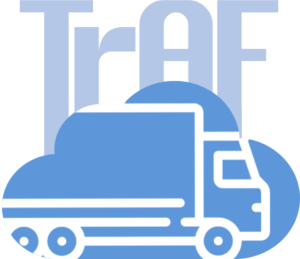Application-level performance benchmarking for serverless applications
When February 28, 2022 @ 10:00-12:00
Where Teams
Audience Project partners
Material Recording and slides available on request to Niklas or Olivia
This Seminar
Presenters: Joel Scheuner (Chalmers)
In this seminar, Joel from Chalmers will characterize the state of serverless applications, motivate the need for application-level performance benchmarking, and present a technical solution for detailed distributed trace analysis of serverless applications in the context of AWS Lambda.
The first part introduces serverless computing based on a thorough analysis of 89 serverless applications [1] and 112 performance evaluation studies [2] from industrial and academic sources.
The technical second part presents a new serverless benchmarking suite and reports detailed performance experiments on AWS based on over 7.5 million traces from 10 diverse applications. Our benchmarking suite (i) leverages synchronous and asynchronous serverless applications representative of production usage, (ii) extrapolates cloud-provider data to generate realistic workloads, (iii) conducts comprehensive, end-to-end experiments to capture application-level performance, (iv) analyzes results using a novel approach based on (distributed) serverless tracing, and (v) supports comprehensively serverless performance analysis. We conduct detailed experiments on AWS, covering five common performance factors: median latency, cold starts, tail latency, scalability, and dynamic workloads. We find that the median end-to-end latency of serverless applications is often dominated not by function computation but by external service calls, orchestration, or trigger-based coordination.
[1] S. Eismann, J. Scheuner, E. van Eyk, M. Schwinger, J. Grohmann, N. Herbst, C. L. Abad, and A. Iosup The State of Serverless Applications: Collection, Characterization, and Community Consensus, IEEE Transactions on Software Engineering. 2021.
[2] J. Scheuner and P. Leitner Function-as-a-Service Performance Evaluation: A Multivocal Literature Review, Journal of Systems and Software (JSS). 2020.
The TrAF-Cloud project at a glance
Trucks today are already connected to the cloud, but functionality that utilizes cloud services are often isolated and implemented ad-hoc. Future trucks are expected to integrate seamlessly with off-board functionality to truly become an integral part of the larger traffic system—not only to enable shorter software update loops to respond to new environmental circumstances, but also to allow seamless deployment of functionality on-board where latency is low, or off-board where unlimited computational power is available.
To meet these expectations, the TrAF-Cloud project explores how to harmonize on- and off-board architectural design principles—to safely and securely blur the border between embedded systems and cloud service.
Concretely, the TrAF-Cloud project focuses on the need to: fundamentally change the signal- and ECU-based onboard vehicle architecture; exploring approaches to bridge on- and off-board platforms for seamless deployment; identify on- and off-board abstraction layers, and; to define useful and flexible APIs to promote modularity and reduce the dependence on specific implementations.
